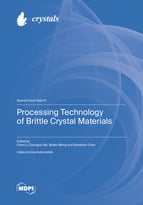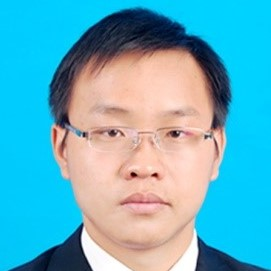Processing Technology of Brittle Crystal Materials
A special issue of Crystals (ISSN 2073-4352). This special issue belongs to the section "Polycrystalline Ceramics".
Deadline for manuscript submissions: closed (20 November 2022) | Viewed by 22288
Special Issue Editors
Interests: ultra-precision machining; grinding; composite energy field manufacturing; laser; close-to-atomic manufacturing
Special Issues, Collections and Topics in MDPI journals
Interests: high-performance machining; grinding mechanism; brittle materials; micro-nano additive manufacturing
Special Issues, Collections and Topics in MDPI journals
Interests: grinding; SiC; diamond; multi-scale simulation
Special Issues, Collections and Topics in MDPI journals
Special Issue Information
Dear Colleagues,
Brittle crystals and ceramics have been widely used in aerospace, 5G networks, and new energy vehicles owing to their excellent mechanical properties and stable chemical properties. For these advanced applications, brittle crystals and ceramics must be shaped into smooth substrates with high surface integrity using precision and ultra-precision processing technologies such as grinding, lapping, and polishing. However, there materials have high brittleness and hardness but low fracture toughness, posing great challenges for efficient machining. Brittle damages, including fractures and cracks, are easily generated during the machining process, which inevitably shortens the service life of crystal components and compromises further applications. Understanding the mechanical properties, revealing the damage evolution and material removal mechanism at micro- and nano-scales, exploring innovative machining technology, and optimizing machining process parameters are of great significance to realize the high-efficiency and precision machining of brittle materials. This collection aims to summarize the frontier research on processing and surface integrity characterization of brittle crystals, ceramics, glasses, and composite materials. The scope of this Special Issue includes but is not limited to:
- Precision machining technology of brittle materials, such as grinding, polishing, lapping, etc.
- In-depth characterization to reveal damage evaluation and removal behaviours involved in machining processes.
- Numerical simulation of material deformation and removal processes.
- Surface engineering when it relates specifically to a manufacturing process.
Dr. Chen Li
Dr. Chongjun Wu
Dr. Binbin Meng
Dr. Shanshan Chen
Guest Editors
Manuscript Submission Information
Manuscripts should be submitted online at www.mdpi.com by registering and logging in to this website. Once you are registered, click here to go to the submission form. Manuscripts can be submitted until the deadline. All submissions that pass pre-check are peer-reviewed. Accepted papers will be published continuously in the journal (as soon as accepted) and will be listed together on the special issue website. Research articles, review articles as well as short communications are invited. For planned papers, a title and short abstract (about 100 words) can be sent to the Editorial Office for announcement on this website.
Submitted manuscripts should not have been published previously, nor be under consideration for publication elsewhere (except conference proceedings papers). All manuscripts are thoroughly refereed through a single-blind peer-review process. A guide for authors and other relevant information for submission of manuscripts is available on the Instructions for Authors page. Crystals is an international peer-reviewed open access monthly journal published by MDPI.
Please visit the Instructions for Authors page before submitting a manuscript. The Article Processing Charge (APC) for publication in this open access journal is 2600 CHF (Swiss Francs). Submitted papers should be well formatted and use good English. Authors may use MDPI's English editing service prior to publication or during author revisions.
Keywords
- crystal processing
- grinding
- polishing
- cutting
- single crystal
- polycrystalline
- ceramics
- composite materials









